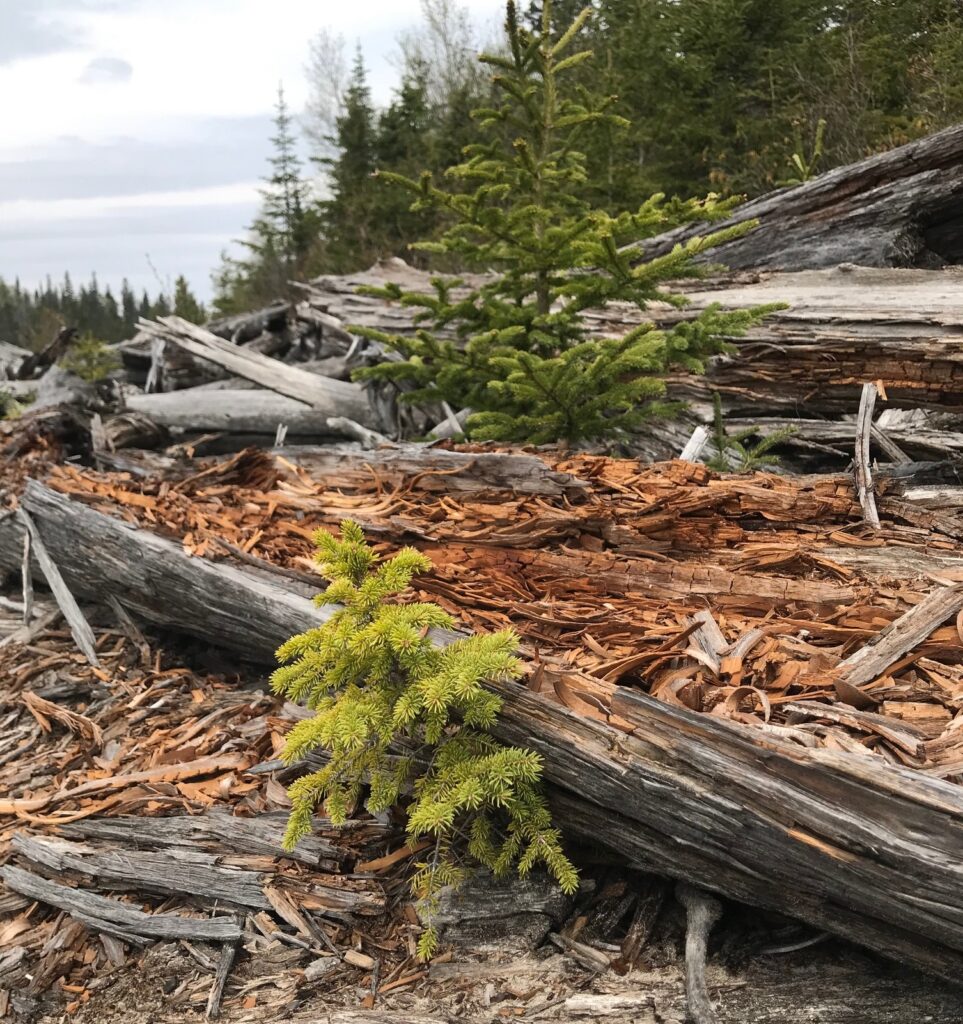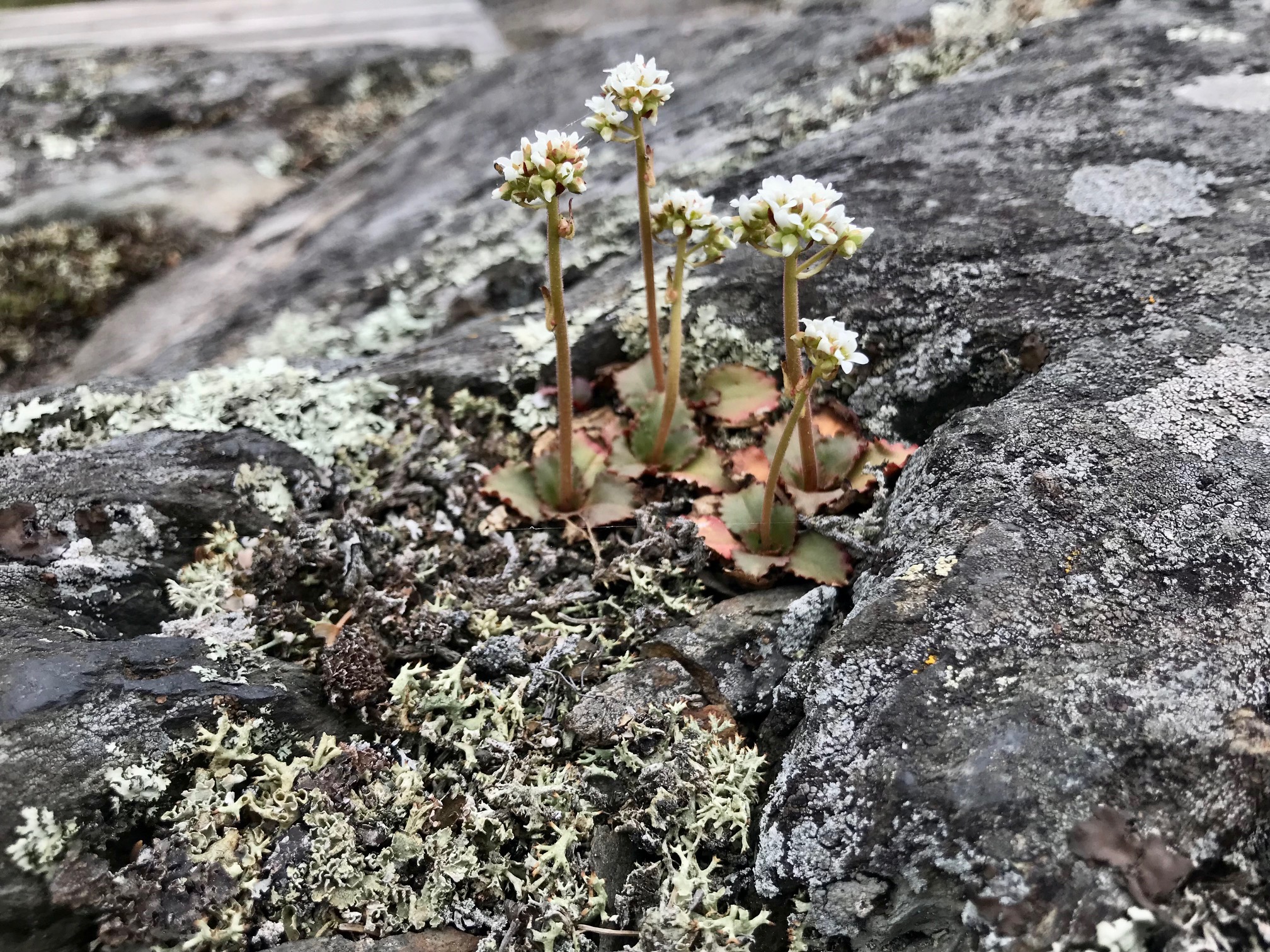In the spring of 2022, I ticked an item off my bucket list: taking a circle tour around Lake Superior—the wildest, most remote of the Great Lakes. I started my trip in Houghton, Michigan, and drove westward in a clockwise circle.
A little more than halfway through my two-week journey, I left Thunder Bay, and drove northeast toward the lake’s most northerly point in Nipigon, Ontario. The north shore of Lake Superior is wild and isolated; you don’t take it for granted when you come across a Tim Hortons or a gas station. And even though it was nearly June by this point, I was still clearly off-season. The occasional billboard beckoned me return for local festivals, none of which seemed to start earlier than July.
Nonetheless, the drive is rich with turnouts, parks, incomparable views, and unique encounters. Somewhere near Nipigon, I spotted a black bear cub from my car while I was driving on the Trans Canada Highway. I made a U-turn and pulled to the side of the road to watch, but it scampered away pretty quickly. It’s mother, I’m sure, was somewhere nearby keeping a close eye on me.
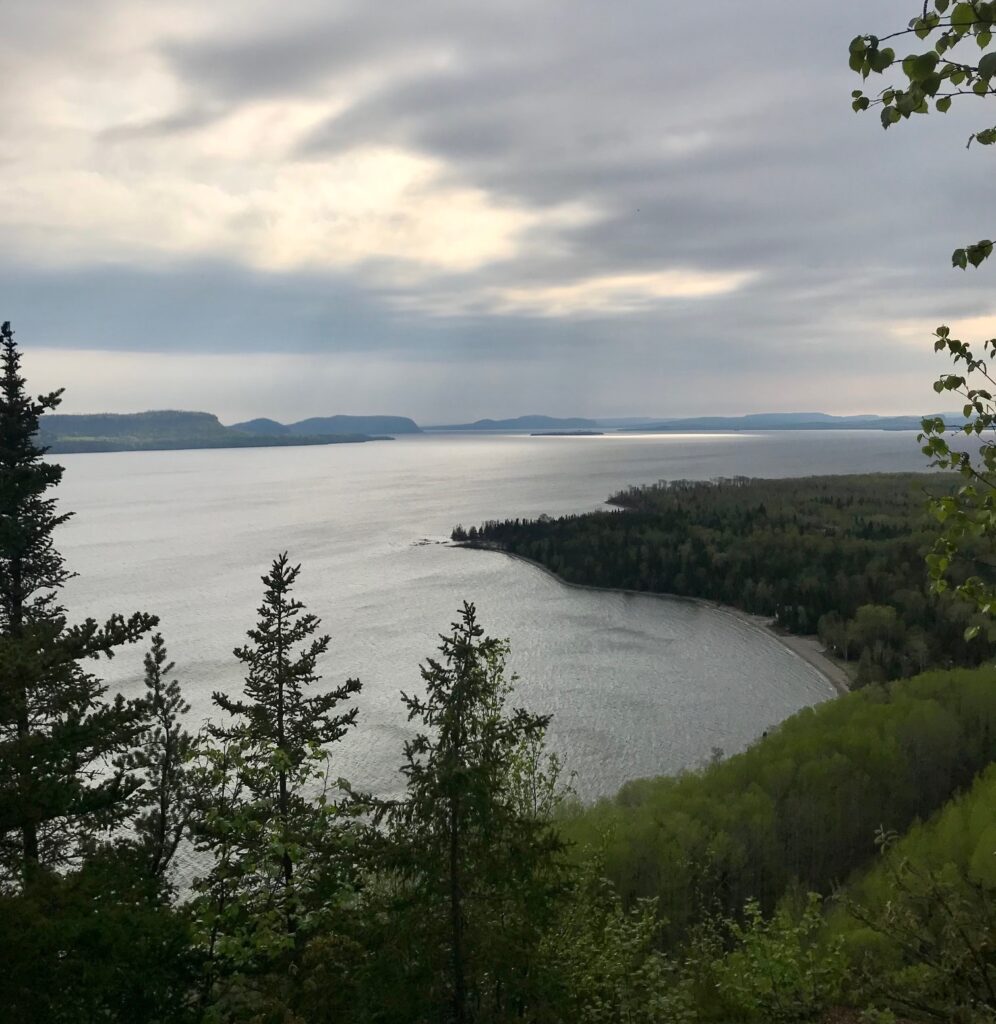
Stopping through Terrace Bay, Ontario, I was a little disappointed to find that the local brewery wasn’t open. A drive around town (basically, three successive right turns to put myself back onto the Trans Canada Highway) showed that I was short on other options.
But there is one (surprisingly) man-made attraction in town that made up for it. Powered by springtime snowmelt, the Aguasabon Falls are ripe with the power of icy, northern waters. “How is that man-made?” you ask. Well, the water that today flows over Aguasabon Falls and into Lake Superior used to flow northward to the Hudson Bay until a dam redirected water south from Long Lake. (Also, good luck Googling “long lake ontario.”)
While the environmental impact is still being studied today, a 2005 U.S. Geological Survey found that the water redirected from Long Lake along with the Ogoki diversion further to the northeast redirect 5,580 cubic feet of water per second to into the Great Lakes. If you’re like me and can’t process a stat represented in cubic feet, that’s equivalent to nearly 42,000 gallons.
I didn’t know any of this until I started writing about it. My fascination with the north has grown in recent years, which I blame on having moved to Indiana for my ex-husband’s career, now my degree. Learning all of this and realizing just how close I was to the Hudson Bay watershed only makes me more eager to return.
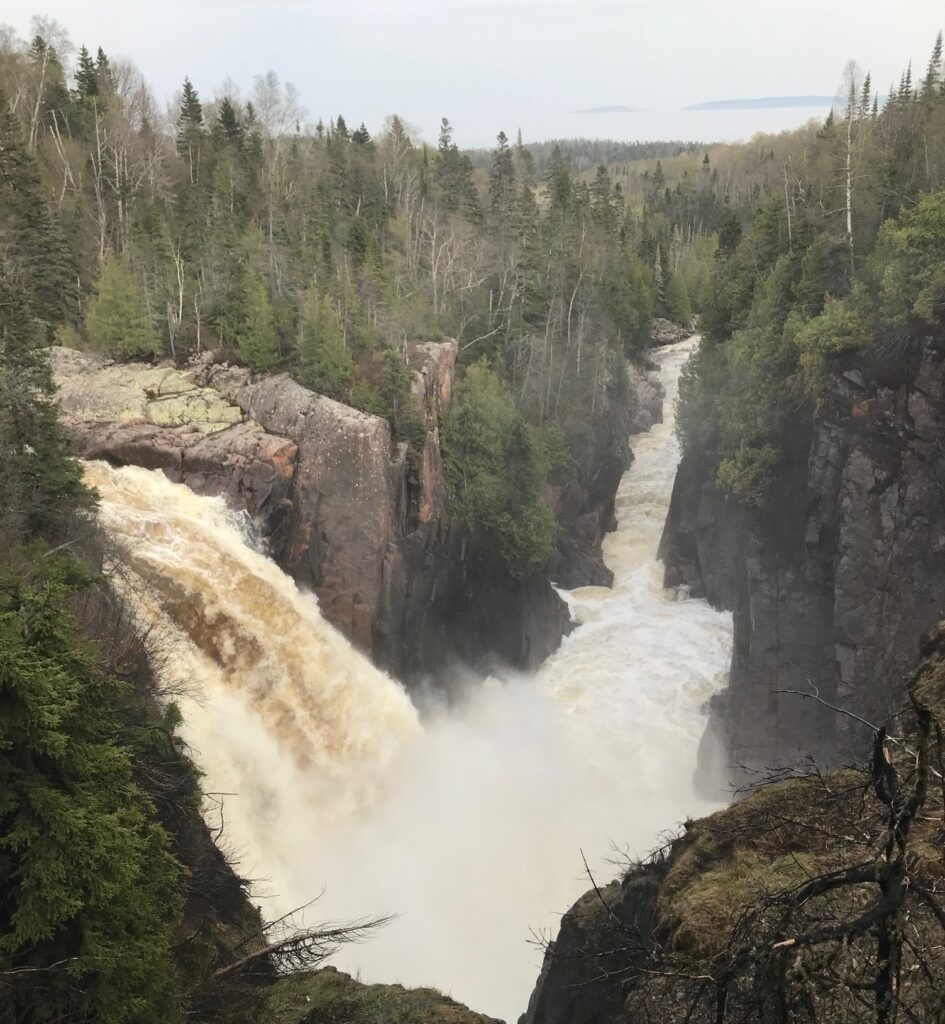
After my stop in Terrace Bay, I continued on to Biigtigong Bed & Cook Your Own Breakfast on the territory of the Ojibways of the Pic River First Nation, just south of Marathon. All the restaurants in Marathon were closed when I arrived, so I made due with tuna and crackers.
In the morning, I had breakfast at Marathon Classic Coffee. It’s housed in the Marathon Center Mall, which isn’t so much a mall as it seems to be a collection of shops carrying necessities (including a grocery store) housed under one roof to make shopping a bit more bearable during the long winter months. If you’re driving the Trans Canada Highway through northern Ontario, make sure you stop by Marathon Classic Coffee for breakfast or lunch. It’s a gem.
After breakfast, I drove to Pukaskwa National Park for some day hikes.
One of my favorite things about the park is that there seems to be a good relationship between the park management and the local Anishinaabe community.
One of the park’s pathways, Bimose Kinoomagewnan, includes reflections on the spiritual traditions of The Seven Grandfather Teachings of the Anishinaabe: truth, courage, respect, integrity, love, wisdom and humility. Being slightly off season, the trail was empty of any other hikers. The only people I saw during my hike were a team of three park rangers who were discussing trail maintenance and kindly waved hello as I made my trek.
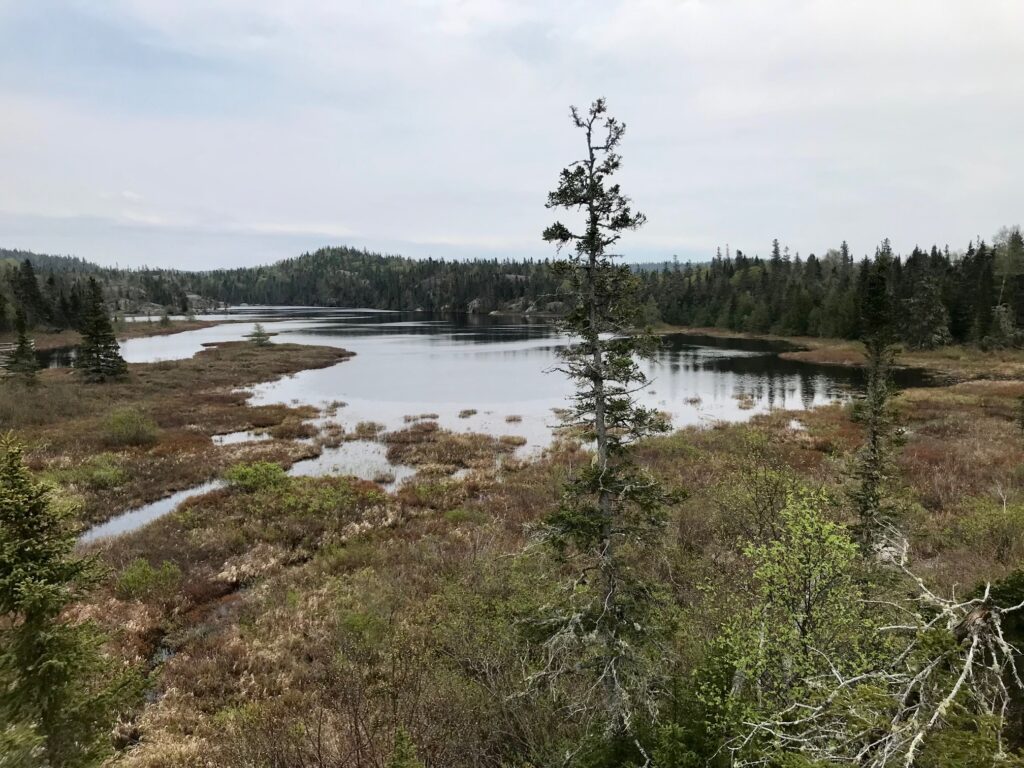
I also hiked the Horseshoe Bay trail, which offered some stunning views of Lake Superior. One of the things I liked most on the trail, though, was the lush green vegetation: the oxygenated hillsides and rich moss. Luxurious green that invites you to breathe deeply and fill your lungs with the Earth’s goodness. The trail was a bit muddy in late May, so definitely bring your hiking boots—but don’t let a little mud deter you from this temple of the Earth’s beauty.
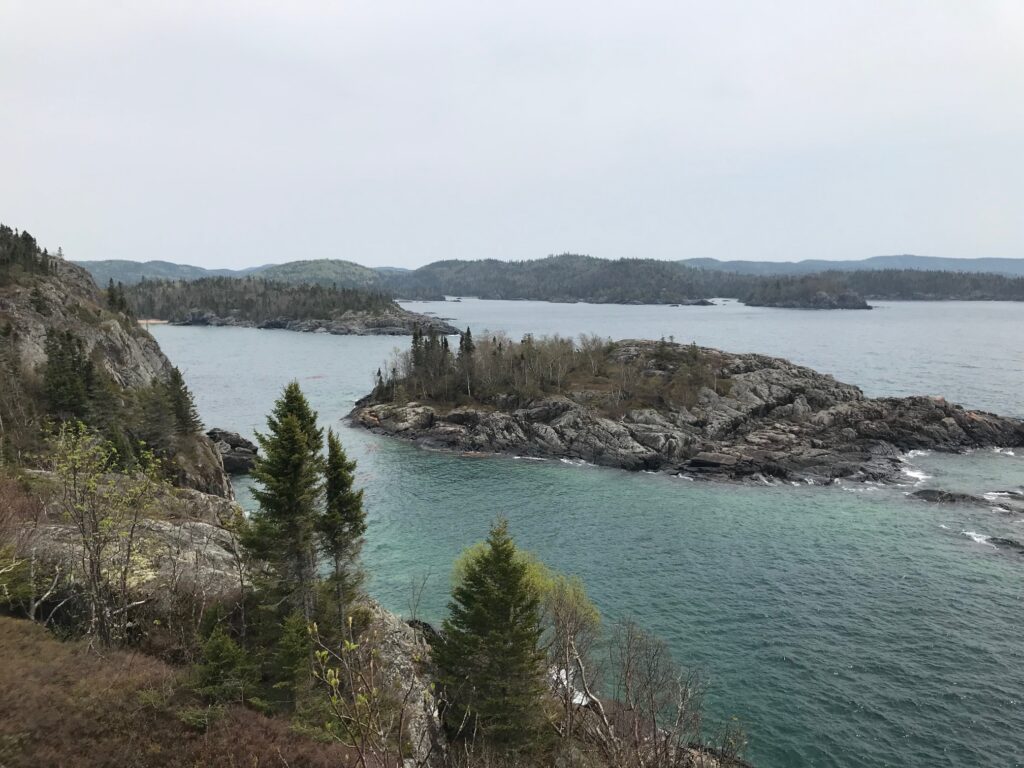
On the other side of a promontory, you emerge from the woods to a sandy beach covered in trees that have been washed-up to the Lake Superior shoreline. The hike was over too quickly.
As I reflect on my journey, I am forced to remember that I made this trip as a spiritual pilgrimage of sorts at the end of a very dark time in my life. I had experienced a painful separation from my ex-husband, leading to suicidal ideation and immense despair. I survived one day to the next by just focusing on the 15 minutes in front of me, and then the 15 minutes after that.
It’s easy to look back in regret for the hikes I didn’t take or the knowledge I didn’t have, I rekindled my love for travel over these two weeks circling Lake Superior with more still to come.
